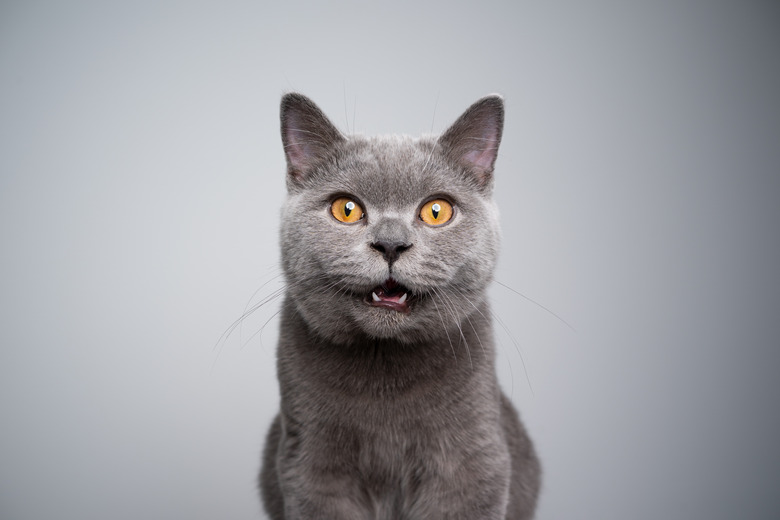Do Cats Know When They're Being Cute?
Cat owners can spot all the telltale signs of feline cuteness— a low, steady purr, a warm nuzzle into your face, perhaps the tiniest slip of a "meow" while they look at you. Small and furry with, usually, big personalities to compliment their features, house cats are beloved for a number of reasons, their adorable look just one of them. We may interpret the things they do as endearing, but do cats know when they're being cute? There isn't much research to tell us whether they do or don't, but there are explanations for the things they do.
Common cute behaviors in cats
Common cute behaviors in cats
What is it about cats that makes them cute? That exact answer will depend on the person and their preference, but it's probably safe to say that most people find their small, furry bodies, wide eyes, and tiny faces adorable. Why? Generally, human beings are naturally drawn to things that resemble babies, like animals or cartoons. This is likely why kittens, puppies, and other infant animals can pull on a person's heartstrings, and that cuteness alert that does off in our brains can carry on after an animal has entered adulthood.
Unlike dogs, who have learned to use a variety of facial and body expressions to convey their cuteness (read: manipulate their adoring owners into giving them what they want,) cats do things a little differently. Purring, kneading, chasing and batting toys around, stalking, pouncing and curling up in a sunny window are just some of the cutest cat behaviors we may see.
Understanding feline body language
Understanding feline body language
Cats, like all animals, rely on their body language cues to communicate with the other felines, animals, and people around them. One behavior that's commonly seen and often considered cute is head bumping, which is when a cat gently taps your forehead with the top of their head, maybe even adding in a little nuzzle. While this may seem like a sweet, intimate show of affection, it's actually due to the fact that your feline is spreading his scent, effectively marking things in his areas as his territory, in case other cats get any funny ideas. These pheromones are spread via sebaceous glands, which are found in the forehead, as well as the paws, chin, tails and lips.
Kneading is another behavior that's often considered cute, assuming the claws stay in, or at least do minimal damage to the surface underneath them. This is another example of scent spreading and is commonly seen on items around the home, like blankets, their person's clothing, or a cat's personal area, like a bed or a cat tree. Kneading is also attributed to scent spreading, and can be used as a self-soothing exercise for cats, or simply as a show of contentment.
Cats and meowing
Cats and meowing
Meowing is something kittens do to get the attention of mother cats, be that for food, assurance, or simply as a way of finding them should they become separated from each other. However, meowing among cats generally stops as cats enter adulthood — grown cats will usually only meow as a way of "speaking" to their people friends. Usually, meowing is used to alert people to discomfort, distress, or pain, or to get a person to do what the cat wants, like refilling a food bowl an hour after dinner. In fact, when seeking food, cats have been reported to increase the frequency of the pitch of their cries to closely mimic the wails of human babies, which triggers a care response from their humans.
In conclusion
In conclusion
We still can't be sure if cats do or don't know when they're being cute, but like any companion animal, they likely understand when a certain behavior is welcome. Common cute traits, like head bumping and meowing, are used as ways of communicating, either to other felines or to their human counterparts. Like dogs, cats likely learn what we consider cute, like a cuddle in our lap, or kneading while making eye contact, and may use that knowledge to get what they want, although we can't be entirely sure.


